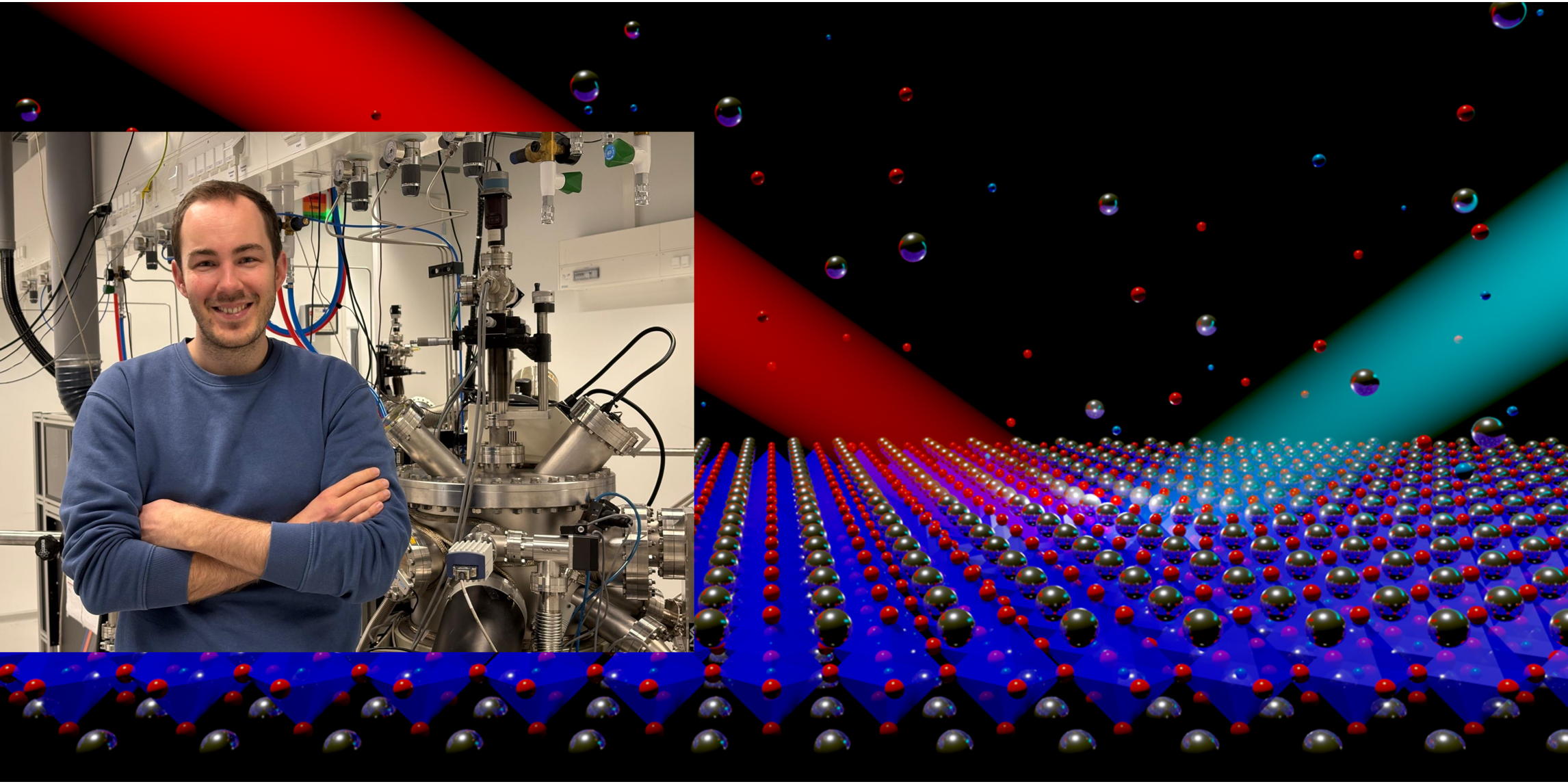Martin Sarott Receives the Prix Schläfli Physics 2025
The Prix Schläfli, awarded by the Swiss Academy of Sciences (SCNAT), is one of the oldest prizes in Switzerland and rewards outstanding dissertations in the natural sciences since 1866. Bestowed every three years, the Prix Schläfli in Physics goes this year to advances in the control of ferroelectric order using light.

Long-term data storage that is intended to endure for tens to hundreds of years is often realized using (ferro)magnetic tape, where each bit of information is encoded in the magnetic orientation of so-called domains, i.e., microscopic regions of a magnetic material. This technology, praised for its robustness, has been around for decades, but because of its limited speed for data reading and writing, it is incompatible with modern highspeed electronic applications. On top of that, writing magnetic bits tends to be energy-inefficient due to Joule heating that accompanies the generation of magnetic fields via electromagnetic coils.
Ferroelectric materials, which consist of permanent electric dipoles that give rise to a macroscopic electric polarization, have the potential for highly energy-efficient data storage media with much faster read/write cycles than their magnetic counterparts. Conventionally, switching of a ferroelectric polarization is achieved by applying a voltage across a thin ferroelectric layer that is sandwiched between two electrodes in a capacitor structure. While being nearly dissipationless, electrical polarization switching can be difficult to accomplish when thinning down the ferroelectric layer to only a few nanometers in thickness, because of the formation of “dead” layers at the electrode/ferroelectric interface and the resulting loss of the ferroelectric properties. This, hence, motivates the exploration of new innovative alternatives other than electric fields to control the polarization in ferroelectrics.
During his dissertation, Martin Sarott investigated the emergence of ferroelectricity and the formation of ferroelectric domains in ultrathin films of the prototypical ferroelectric material PZT (short for PbZrxTi1-xO3), which has found countless commercial applications for its piezoelectric properties, for instance in sonar, ultrasound imaging, pressure sensors, and micro-positioners. Martin Sarott investigated in situ, during thin-film growth, how the mechanical constraints from the substrate and the electrostatic environment affect the polarization stability and the arrangement of ferroelectric domains. This knowledge then enabled him to exploit the use ultraviolet light to control the ferroelectric polarization in a reversible and non-volatile manner without the need for electric-field application. With this achievement, he has laid the foundation for the all-optical ultrafast switching of ferroelectric materials.
For his doctoral work, Martin Sarott will be honored by the external page Swiss Academy of Sciences (SCNAT) with the Prix Schläfli in Physics 2025 in September at EPFL.
SCNAT Press Rlease: external page English, external page German
SCNAT Article: external page English, external page German